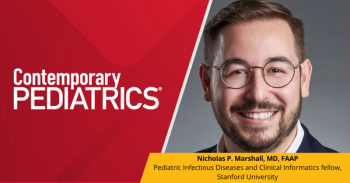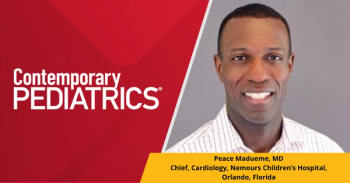
- June 2024
- Volume 40
- Issue 06
Pediatric palliative care: What the general pediatrician needs to know
Get to know the essentials of pediatric palliative care.
With the advent of increasingly sophisticated medical technology and life-prolonging therapies, children with life-limiting illness are living longer. Longer survival means more children are living with chronic, progressive illnesses or long-term treatment toxicities. Primary care pediatricians play a pivotal role in the medical team for these children; they build relationships with families, provide support, coordinate care, and construct a medical home that adapts to patients’ complex needs. Pediatric palliative care (PPC) is another key component of medical care for children with life-limiting or chronic illnesses. PPC clinicians walk alongside patients, families, and other members of the care team to provide symptom management and medical decision-making support tailored to the child’s situation and each family’s unique culture, values, and beliefs.
In 2000, the American Academy of Pediatrics provided a model for integrating palliative medicine into pediatric practice.1 More than 20 years later, the field of PPC has broadened in scope and accessibility throughout the United States and globally. Even so, many pediatricians have questions about the scope of PPC, how to incorporate it into the medical home, and what to do if subspecialty PPC services are limited in their community.2 Although there has been ample attention paid to the integration of PPC in subspecialties such as oncology and neonatology, there has been less published guidance on how general pediatricians should engage with PPC. As PPC providers, we see opportunities for improving awareness and utilization of palliative care services and believe general pediatricians can be at the forefront of this effort. This article presents a practical, up-to-date guide for when and how to engage specialized PPC services, as well as ways to incorporate palliative care principles into general pediatric practice.
What is PPC?
PPC is specialized medical care that uses a holistic approach to improve quality of life for children with serious illnesses. Suffering is the primary pathology addressed by the PPC clinician. Suffering is a complex
experience, representing the interplay among physical, psychological, social, cultural, and spiritual factors (Figure).3 Rather than focusing on a single organ system or disease, palliative care approaches the whole person, their holistic experience with illness, and how they define quality of life throughout the illness journey.
What does PPC do?
PPC clinicians are trained in: (1) pain and symptom management, (2) assessing a family’s goals of care, (3) care coordination, and (4) hospice and end-of-life care. The common threads of these tasks are communication, relationship building, and psychosocial support.
Pain and symptom management
PPC clinicians have an expanded toolbox of strategies for managing intractable symptoms such as pain, fatigue, nausea/vomiting, anxiety, insomnia, and dyspnea (Table 1). Depending on state laws and hospital policies, PPC clinicians may be able to prescribe restricted outpatient medications (eg, methadone) or manage advanced inpatient therapies (eg, palliative sedation). PPC clinicians are often well versed in the use of complementary and alternative therapies. Evidence on efficacy of these therapies is limited, but many can be safely used by patients under the guidance of their physician.4
Goals of care assessment
and discussions
Goals of care can be viewed as a spectrum, from focus on cure to comfort. The reality is more nuanced. As the child’s disease trajectory evolves, goals can shift and sometimes come into conflict, which highlights the importance of longitudinal PPC relationships and iterative discussions.5 Goals of care discussions encompass many topics related to a child’s care such as pursuing procedures, initiating medical technology, and using experimental or off-label therapies.6 Goals are best identified by engaging in family-centered communication, which is the crux of shared decision-making.7 A family’s hopes for their child are impacted by the child’s medical condition and the family’s experiences, culture, beliefs, lifestyle, and community. When there is no “right” decision, the best decision is one that aligns with the family’s goals.
One important subset of goals of care decisions is advanced care planning (ACP). PPC clinicians start by building relationships and rapport with a family, which lays a foundation for subsequent ACP discussions.8 Families often prefer to have ACP discussions with clinicians who know their child and take family values into account, whether it be their primary care pediatrician, a PPC team member, or another subspecialist.9
Care coordination
Patients with complex and life-threatening conditions often require multidisciplinary care teams consisting of subspecialists, social workers, and nurses across various medical settings (intensive care, emergency department, outpatient). PPC providers help optimize communication among all members of the care team, including the patient and family, to ensure the patient is getting the medical care and services needed to meet their goals. Social workers or nurse coordinators within the PPC team can connect families with community
resources or services.10
Hospice and end-of-life care
PPC providers have expertise in caring for children who are actively dying, both at home and in the hospital. End-of-life care encompasses medical, psychosocial, and bereavement support. Hospice is palliative care that focuses on comfort when the patient has less than 6 months to live if the disease were to follow its natural course as certified by a physician. In the United States, hospice is an elective insurance benefit guaranteed by Medicaid and the Children’s Health Insurance Program and usually takes place in the child’s home. Children on hospice receive regular visits from hospice nurses, social workers, chaplains, and child life specialists, as well as 24/7 on-call access to a health care provider. Hospice care also includes medications for comfort, durable medical equipment, and legacy-building activities. Children who survive longer than 6 months can be recertified and continue on hospice if their disease still has a limited prognosis.11
Pediatric hospice is different from adult hospice in that, under the Affordable Care Act, Section 2302 (“Concurrent Care for Children”), children on hospice can continue curative therapies as long as they meet hospice criteria (< 6 months prognosis, based on natural disease course).12 Many pediatric hospice patients remain full code and need aggressive medical interventions for acute problems. Because children on hospice often continue to have recurring hospital admissions and clinic visits with their physicians and subspecialists at end of life,13 the primary care pediatrician can continue to play an active, influential role in care.
When to consult specialty palliative care services?
PPC involvement should be considered for patients with complex, critical, and/or life-threatening conditions. Prognosis, complexity, symptom severity, and subspecialty scope of practice should all be factors in deciding whether to consult PPC. Cancer, congenital cardiac disorders, and neurodegenerative conditions are some of the diagnostic categories for which PPC is often consulted. At some institutions, specific diagnoses (eg, incurable brain cancer) or treatment plans (eg, transplant) trigger an automatic consultation.14 Many patients with complex chronic conditions build strong longitudinal relationships with their primary care pediatrician, hospitalists, or emergency pediatricians. These providers should feel empowered to advocate for PPC involvement.
The American Academy of Pediatrics, World Health Organization, and multiple subspecialty-specific groups include early integration of PPC as part of best practice.15,16 Involving PPC specialists early in the disease course capitalizes on their expertise in building relationships with families and exploring their goals over time, allowing for provision of decision-making guidance that is informed by the family’s values.
Practical tips for providing primary PPC as a general pediatrician
Specialized PPC services remain limited or inaccessible in some areas. This is when primary pediatricians can step in as palliative care “generalists.”17 The term general or primary palliative care refers to palliative care services provided by non–palliative care specialists.18 General palliative care can occur in place of or in conjunction with specialized palliative care. There are many principles of palliative care that non–palliative care–trained clinicians can incorporate into their practice. Below, we highlight a few ways general pediatricians can include palliative care principles to help care for their medically complex patients. We have also compiled a table of resources for those seeking to learn more (Table 2). The resources we chose to highlight are kept up to date. Some are free and virtual, whereas others are in-person educational events.
Relationship-building and communication for generalists
Primary care pediatricians are integrated into their patients’ lives in such a way that they can build longitudinal, trusting relationships and establish rapport that allows for organic exploration of families’ values, beliefs, perception of illness journey, and goals of care. Equipped with this understanding, primary care pediatricians can facilitate shared decision-making and assess parents’ understanding of their child’s condition. When providing anticipatory guidance, primary care pediatricians can prepare families for what lies ahead, including expected changes in their child and implications for day-to-day life. Pediatricians can use palliative communication strategies in both inpatient and outpatient settings. One frequently used framework for conversations around serious news is SPIKES (Table 2). Delivering serious news can evoke a wide spectrum of emotional reactions. The NURSE model (Table 3) provides guidance on how to respond to emotions in an empathetic, compassionate manner.
Symptom management for generalists
General pediatricians are well positioned to continually assess patient symptoms and quality of life. General palliative care involves performing a holistic assessment of suffering, prescribing appropriate therapies, and advocating for patients’ comfort. One invaluable way general pediatricians can contribute to symptom management is by reconciling patients’ medications and therapies. In coordination with the patient’s family and other subspecialists, they can help determine which therapies align with the goals of care and which therapies are causing burdensome adverse effects without benefit. Primary pediatricians can also familiarize themselves with first-line symptom management therapies. Participating in education events and identifying readily available symptom management resources (eg, Dana-Farber Cancer Institute Blue Book) focused on symptom management equips clinicians with foundational knowledge and competencies that can be incorporated into
general practice.
End-of-life care for generalists
Although all general pediatricians have basic training in communication and symptom management, many general pediatricians do not receive formal training in end-of-life care. As a result, end-of-life care is out of the comfort zone for many clinicians without palliative training. Nevertheless, situations may arise where general pediatricians participate in end-of-life care, with or without PPC specialists involved. Situations that call for a general pediatrician to manage an actively dying patient include lack of PPC providers, family or care team preference, and unexpected or sudden clinical decline. If the PPC team is available but has not met the patient prior to the point of imminent death, families may prefer their trusted general pediatrician continue to lead their care team through end of life.19 The Pediatric Palliative Care Coalition and Courageous Parents Network are organizations that offer virtual education on end-of-life care. For immediate needs, the Palliative Care Fast Facts and Concepts are a great resource. With proactive education and awareness of resources, general pediatricians can feel more empowered to manage comfort, provide psychosocial support, and communicate with families at end of life and during bereavement.
Conclusion
Primary care pediatricians and PPC specialists both play pivotal roles on the medical teams of children with life-limiting conditions.
References
1. American Academy of Pediatrics. Committee on Bioethics and Committee on Hospital Care. Palliative care for children. Pediatrics. 2000;106(2 Pt 1):351-357. doi:10.1542/peds.106.2.351
2. Saad R, Abu-Saad Huijer H, Noureddine S, Sailian SD. Pediatric palliative care through the eyes of healthcare professionals, parents and communities: a narrative review. Ann Palliat Med. 2022;11(10):3292-3314. doi:10.21037/apm-22-525
3. Prabhakar A, Smith TJ. Total pain #417. J Palliat Med. 2021;24(7):1100-1101. doi:10.1089/jpm.2021.0128
4. Zeng YS, Wang C, Ward KE, Hume AL. Complementary and alternative medicine in hospice and palliative care: a systematic review. J Pain Symptom Manage. 2018;56(5):781-794.e4. doi:10.1016/j.jpainsymman.2018.07.016
5. Feudtner C, Beight LJ, Boyden JY, et al; PPCRN SHARE Project Group. Goals of care among parents of children receiving palliative care. JAMA Pediatr. 2023;177(8):800-807. doi:10.1001/jamapediatrics.2023.1602
6. Ellis DI, Nye RT, Wolfe J, Feudtner C. Surgical intervention in patients receiving pediatric palliative care services. Pediatrics. 2023;151(2):e2022058905.
doi:10.1542/peds.2022-058905
7. Eaton SM, Clark JD, Cummings CL, et al. Pediatric shared decision-making for simple and complex decisions: findings from a Delphi panel. Pediatrics. 2022;150(5):e2022057978. doi:10.1542/peds.2022-057978
8. Root MC, Koo J, Collins G, Penumarthy NL, Hermiston M, Bogetz JF. Allowing relationships to unfold: consult reason and topics discussed in initial and subsequent palliative care visits among children who died from relapsed/refractory cancer. J Pediatr Hematol Oncol Nurs. 2023;40(3):170-177. doi:10.1177/27527530221140069
9. Bennett HE, Duke S, Richardson A. Paediatric advance care planning in life-limiting conditions: scoping review of parent experiences. BMJ Support Palliat Care. 2023;13(2):161-173. doi:10.1136/bmjspcare-2022-003544
10. Rogers MM, Friebert S, Williams CSP, Humphrey L, Thienprayoon R, Klick JC. Pediatric palliative care programs in US hospitals. Pediatrics. 2021;148(1):e2020021634. doi:10.1542/peds.2020-021634
11. Lotstein D, Klein MJ, Lindley LC, Wolfe J. From hospital to home: referrals to pediatric hospice and home-based palliative care. J Pain Symptom Manage. 2023;65(6):570-579. doi:10.1016/j.jpainsymman.2023.02.009
12. Lindley LC, Keim-Malpass J, Svynarenko R, Cozad MJ, Mack JW, Hinds PS. Pediatric concurrent hospice care: a scoping review and directions for future nursing research. J Hosp Palliat Nurs. 2020;22(3):238-245. doi:10.1097/NJH.0000000000000648
13. Lindley LC, Cozad MJ, Svynarenko R, Keim-Malpass J, Mack JW. A national profile of children receiving pediatric concurrent hospice care, 2011 to 2013. J Hosp Palliat Nurs. 2021;23(3):214-220. doi:10.1097/NJH.0000000000000738
14. Bernier Carney KM, Goodrich G, Lao A, et al. Palliative care referral criteria and application in pediatric illness care: a scoping review. Palliat Med. 2023;37(5):692-706. doi:10.1177/02692163231163258
15. Lee A, DeGroote NP, Brock KE. Early versus late outpatient pediatric palliative care consultation and its association with end-of-life outcomes in children with cancer.
J Palliat Med. Published online May 24, 2023. doi:10.1089/jpm.2023.0063
16. Linebarger JS, Johnson V, Boss RD, et al. guidance for pediatric end-of-life care. Pediatrics. 2022;149(5):e2022057011. doi:10.1542/peds.2022-057011
17. Sreedhar SS, Kraft C, Friebert S. Primary palliative care: skills for all clinicians. Curr Probl Pediatr Adolesc Health Care. 2020;50(6):100814. doi:10.1016/j.cppeds.2020.100814
18. Generalist palliative care. Palliative Care Network of Wisconsin. Accessed September 18, 2023. https://www.mypcnow.org/resources/members/generalist-palliative-care/
19. Kaye EC, Friebert S, Baker JN. Early integration of palliative care for children with high-risk cancer and their families. Pediatr Blood Cancer. 2016;63(4):593-597. doi:10.1002/pbc.25848
Articles in this issue
over 1 year ago
Sickle Cell Disease: Promises for a brighter futureover 1 year ago
Another way to manage incessant scratching in children?over 1 year ago
2024 coding updateover 1 year ago
What to expect in the June issue of Contemporary Pediatricsover 1 year ago
Managing and treating eating disordersNewsletter
Access practical, evidence-based guidance to support better care for our youngest patients. Join our email list for the latest clinical updates.




